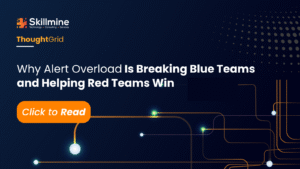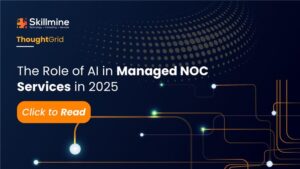According to a recent study, around 51% of organizations experienced cost overruns during their SAP projects, while 46% faced schedule delays. Furthermore, only 37% of companies reported achieving more than 50% of their expected business benefits. These figures emphasize the need for careful planning, experienced management, and thorough execution to maximize the value derived from SAP Managed Business Services.
The number of SAP Managed Business Services implementation that fail due to companies neglecting necessary planning and due diligence or assigning a management team without relevant SAP implementation experience is surprisingly high. To ensure success, it is crucial to prioritize thorough preparation and assemble a competent SAP-managed service provider to oversee the SAP implementation. Here are a few tips that can help your business implement SAP effectively.
What is SAP software?
Traditional business models typically distribute data management, with each business function storing its operational data independently. This decentralized approach creates challenges for cross-functional collaboration, as employees find it challenging to access information from other business units.
In contrast, SAP implementation streamlines data management by centralizing it, offering multiple business functions a unified and accurate perspective. This centralized SAP implementation methodology empowers companies to navigate intricate business processes more effectively, granting employees from diverse departments seamless access to real-time insights spanning the entire enterprise. Consequently, businesses can expedite workflows, enhance operational efficiency, boost productivity, elevate customer experiences, and ultimately bolster profits.
Benefits of SAP
Flexibility and Customization:
A major strength of SAP software lies in its flexibility and high degree of customization. As a thoroughly integrated application with various sub-modules, SAP allows businesses to tailor it to their specific needs.
Higher Scalability:
Based on a client-server model (R3), SAP’s three-tier architecture provides substantial scalability. SAP’s modular and adaptable nature allows users to quickly acquire new features or update systems, ensuring flexibility to meet evolving business needs.
Integration with Other Modules:
SAP’s core module, SAP Sales and Distribution, serves as a nexus for various modules like financials (FICO), material management (MM), Project Systems (PS), production planning (PP), and Warehouse Management (WM) integrated with quality control (QM). SAP excels in seamlessly integrating diverse modules into a unified system.
Industry-specific Solutions:
SAP offers industry-specific solutions such as IS OIL, IS Retail, and IS AFS, leveraging an in-depth understanding of specific processes. With over 27 SAP Industry Specific Solutions and additional solutions from SAP partners, businesses can find tailored solutions for their industry requirements.
World-class Support:
SAP’s Support Portal is a customer-facing site offering support tools, services, and applications. Users can connect with support experts via the SAP marketplace, ensuring a comprehensive support ecosystem.
User-Friendly Interface:
Despite its advanced features, SAP maintains a user-friendly interface that is easy to navigate and learn. Through careful analysis and removing unnecessary functions, users can quickly grasp the functionality of SAP, making it accessible even for those new to the system.
Implementation Support:
SAP implementation requires less customization than other ERP software solutions. The platform offers flexible solutions tailored to specific needs and supports clients with rapid development solutions and methodology tools.
Return on Investment:
While SAP may have a higher initial cost, it provides one of the fastest financial returns in the ERP market. This rapid return on investment makes SAP a preferred choice for large and small enterprises, solidifying its position as a leading ERP system.
Common Challenges in SAP Implementation and Ways to Overcome Them
Lack of Strategy
Effective strategy forms the backbone of any successful technical implementation, and its absence can lead to setbacks in SAP migration. To combat this challenge, developing a comprehensive migration strategy is imperative, considering factors such as project scope, desired outcomes, budget, timeline, necessary resources, and potential risks. SAP Managed Services helps define roles and responsibilities clearly for all team members and stakeholders.
User Interface Challenges
The user experience is paramount for the success of any brand or business, with the user interface playing a pivotal role. Users often face difficulties navigating through new systems, emphasizing the need for adequate training and support. Providing user manuals, online tutorials, and support personnel facilitates users’ becoming comfortable with the new system. Simultaneously collecting user feedback helps identify usability issues, allowing for necessary improvements.
Disorganization Issues
Disorganization can lead to delays and errors in SAP migration. Establishing a project plan that clearly outlines the scope, timeline, and required resources is essential. SAP Managed Service Providers help define roles and responsibilities for team members and stakeholders and develop a risk management plan to identify and mitigate potential issues.
Complex Data Migration
Data migration, a critical aspect of SAP migration, is complex and time-consuming. A meticulous plan for the data migration process, developed in collaboration with experts, ensures accurate and efficient data transfer. SAP services ensure that comprehensive services are taken, from data profiling and cleansing for quality assurance to defining data mapping and transformation rules.
Prioritizing Test Runs
Testing is a crucial step often overlooked or underestimated in SAP migration. Conducting thorough testing and validation provides insights into the operational functioning of the new system and highlights any errors. Functional testing ensures correct business process functionality, performance testing assesses system load handling, and security testing verifies system security.
Types of SAP Software
Different variations of SAP software are available, with past editions including SAP R 2 and SAP R 3. Presently, there are several types of SAP software:
- SAP S/4HANA
SAP S/4HANA is tailored for medium and large enterprises, providing both analytical and transaction processing capabilities. It is particularly suitable for companies that rely on real-time analytics, such as those in the banking, hospitality, security, and airline sectors. - SAP S/4HANA Cloud
This version of SAP S/4HANA offers quarterly updates and allows user access through a web browser. Featuring in-memory computing, analytics, and machine learning support, it caters to the needs of medium and large enterprises. - SAP Business One
SAP Business One can operate using SAP HANA and Microsoft SQL, making it ideal for organizations with up to 350 employees. With over 500 third-party integrations available, businesses can easily customize SAP Business One to meet their specific requirements. The software employs a customizable pricing model to better align with various configurations. - SAP Business ByDesign
Geared towards mid-market businesses, SAP Business ByDesign is designed for organizations with more than 250 employees but fewer than 1,500. It is particularly beneficial for industries such as manufacturing, wholesale distribution, and the public sector, offering specific functionalities for these sectors. Business ByDesign utilizes a user-based pricing model, typically resulting in smaller businesses paying less than their larger counterparts.
Skillmine provides tailored SAP implementation solutions for various industries, empowering businesses to thrive in today’s competitive market. Leveraging profound domain expertise and state-of-the-art technology, we streamline processes, enhance efficiency, and facilitate informed decision-making. Our SAP managed services aim to foster growth, boost profitability, and establish a competitive edge for your business.
Tips for a Successful SAP Initiative
Prioritize business processes and needs before anything else
Often, companies become overly enthusiastic about the technical capabilities or platforms offered by a specific system, causing them to overlook the importance of aligning it with their unique business requirements. To conduct more effective evaluations of SAP (Systems, Applications, and Products) options, companies must delve into the specifics of how their business operates and determine their actual needs. Defining business requirements should be an ongoing process that begins during the selection phase and continues throughout implementation.
Implement strategies to achieve a favourable return on investment (ROI)
To maximize the benefits for a business, it is insufficient to merely create a high-level business case to obtain approval from upper management or the board of directors. While this step is crucial and should be completed before committing to SAP Managed Business Services, companies should also define tangible business benefits that are as measurable as the defined solution cost. Additionally, they should establish key performance indicators, set baselines and targets for these metrics, and continuously monitor performance after the system goes live.
Ensure effective project management and dedicated resource allocation
The success of an SAP project largely depends on efficient management and adequate support. Exemplary initiatives exhibit several common characteristics, such as having a capable project manager at the helm, involving internal subject matter experts, implementing a comprehensive risk management plan with mitigation measures, and conducting ongoing phase reviews throughout the process. If the implementation is not progressing as intended or milestones are not being met, seeking the assistance of a SAP-managed service provider with substantial SAP experience is recommended.
Ensure commitment from company executives.
A prosperous project requires the backing of top-level management, including all C-level executives, to address challenges such as conflicting business requirements and implement effective solutions. Organizations often discover that regular project reviews involving executives or steering committee members enable managers to promptly tackle emerging issues and maintain positive project momentum.
Emphasize sufficient training and change management
To achieve a successful SAP implementation, it is essential to prioritize end-user training, organizational change management, and job design. The introduction of ERP systems can cause disruptions among employees and even induce panic if individuals are not adequately equipped to utilize the software proficiently. When providing ERP functional training, the focus should be on imparting knowledge about business workflows and technical skills rather than just transactional operations. Adopting the “train-the-trainer” approach has proven to be an effective method for instilling knowledge within the organization.
Focus on data migration early in the process
Data migration is incredibly complex, entails a certain level of business and technical risk, and is affected by the number of sites that a company is going live with, how many legacy systems are being replaced and how many users are involved. The following are techniques to help companies do it right:
- Define a data migration strategy up front including master (customer, vendor, product) and transactional (open PO, open invoice) data.
- Communicate data migration plans to employees and end-users.
- Remember that it’s never too early to begin scrubbing and mapping data.
- Thoroughly verify migrated data during conference room pilots and testing.
- Remember “garbage data” will create problems with your SAP solution.
- Don’t forget to plan for historical data and archival and access of data.
Leverage the value of conference room pilots (CRPs)
Functional and integration testing are crucial steps to be conducted before system deployment. Conference Room Pilot (CRP) sessions ensure that the software functions as per the designated specifications and that data flows accurately throughout the system. The success or failure of your SAP project is greatly influenced by the value derived from CRPs.
Additionally, several non-technical factors play a critical role in achieving a successful implementation:
- Clearly defined business process and workflow definitions aid in effective communication with end-users and facilitate employee training on the new system.
- Business process and workflow gap analysis provide employees with an understanding of how the previous methods align with the new business workflows.
- Conducting organizational change and impact analyses, coupled with consistent and targeted internal communications, assist employees in adapting to the changes seamlessly.
Conclusion
SAP projects frequently surpass initial expectations in terms of timeframes and budgets, and even more concerning, they often fall short of delivering the anticipated benefits that companies envision and anticipate. By comprehending the underlying reasons behind these challenges, companies can develop realistic plans for implementing SAP software. It is crucial to acknowledge that many of these difficulties stem from process and organizational change management issues rather than solely being technology-related.
Aligning SAP software with your business processes and requirements can be arduous, time-consuming, and of paramount importance. Skillmine is a SAP-managed service provider that specializes in the SAP enterprise resource planning (ERP) market, catering to organizations of all sizes. Our SAP Managed Business Services assist clients in managing implementation processes and expediting necessary organizational changes to ensure that each client can fully realize the business benefits offered by SAP.
Looking for expert technology consulting services? Contact us today.





